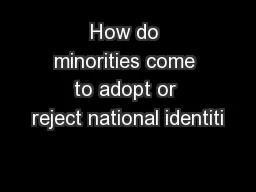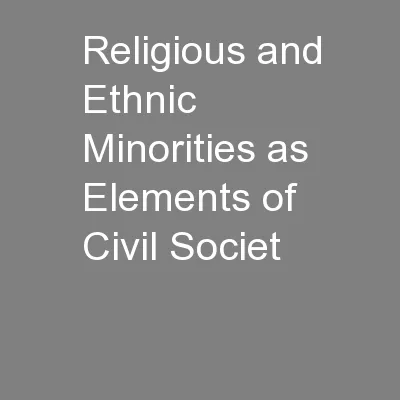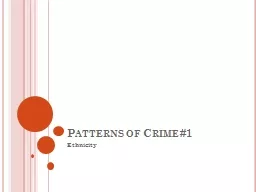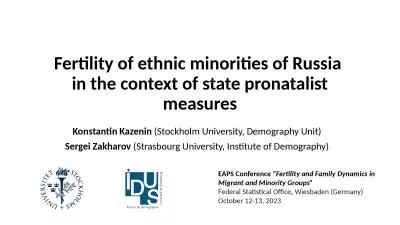PPT-How do minorities come to adopt or reject national identiti
Author : mitsue-stanley | Published Date : 2017-09-04
Anthony Heath Director Centre for Social Investigation Nuffield College Oxford csinuffield Aims To report new evidence on the national and ethnic identities
Presentation Embed Code
Download Presentation
Download Presentation The PPT/PDF document "How do minorities come to adopt or rejec..." is the property of its rightful owner. Permission is granted to download and print the materials on this website for personal, non-commercial use only, and to display it on your personal computer provided you do not modify the materials and that you retain all copyright notices contained in the materials. By downloading content from our website, you accept the terms of this agreement.
How do minorities come to adopt or reject national identiti: Transcript
Download Rules Of Document
"How do minorities come to adopt or reject national identiti"The content belongs to its owner. You may download and print it for personal use, without modification, and keep all copyright notices. By downloading, you agree to these terms.
Related Documents














